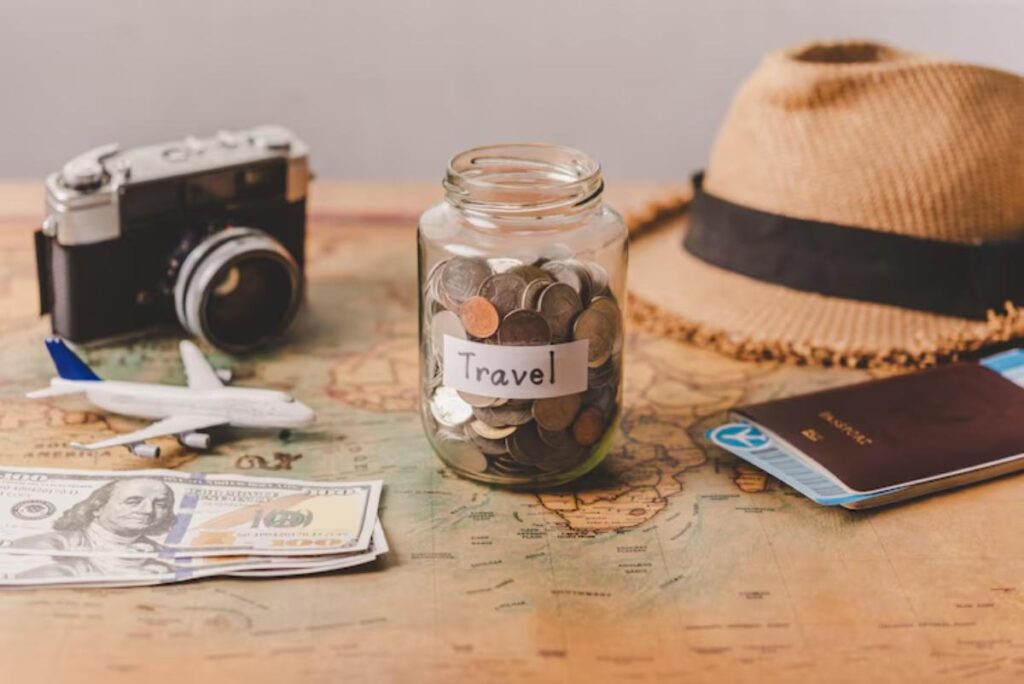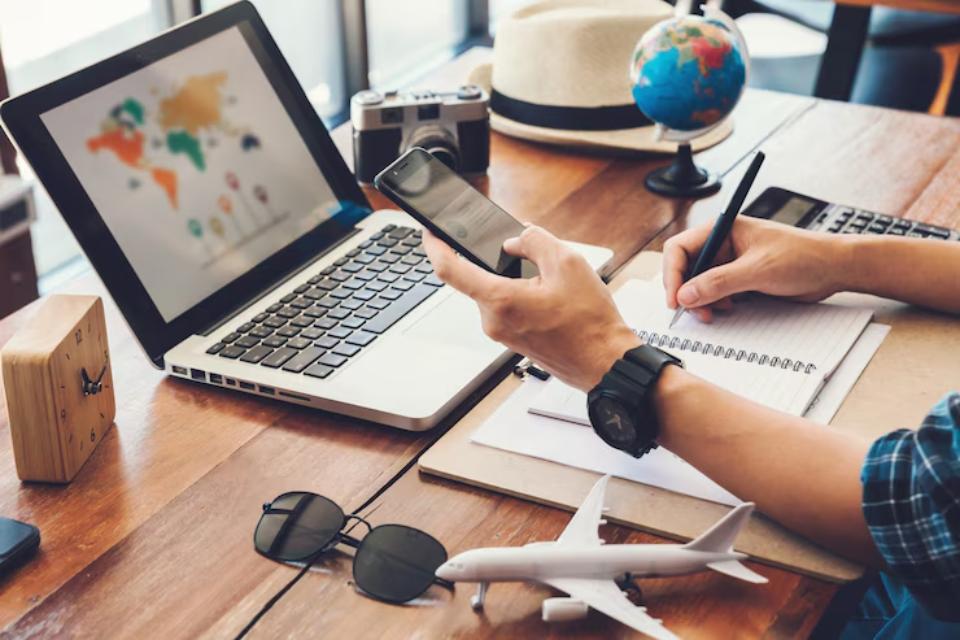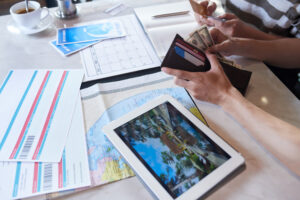The Travel Blog

Managing Travel Expenses: Tips for Using Budget Apps Effectively
Travel is exciting, refreshing, and sometimes even life-changing. But here’s the not-so-glamorous truth: nothing drags a dream trip down faster than watching the budget spiral out of control halfway through.
One spontaneous dinner, a surprise taxi fare, a last-minute booking—individually, they seem harmless. Together? They sneak up like a wave, leaving travellers drenched in financial regret.
That’s why travel expense management isn’t just a smart habit—it’s a travel essential. And in 2025, managing money on the go is easier than ever thanks to a wide range of budgeting app tools tailored specifically for life on the move.
But like any tool, a travel budget app only works well if it’s used the right way. So let’s dig into some real, down-to-earth strategies for trip cost control—not just by downloading an app, but by using it wisely and consistently.
Why Travel Budgets Go Off the Rails
Here’s the thing: most people don’t mean to overspend. It just sort of happens.
Day one starts strong—spending’s tracked, meals are within budget, and a mental checklist is in place. But by day four? Receipts are lost, numbers get fuzzy, and the “just this once” purchases start to pile up.
Sound familiar?
The fix isn’t about restriction. It’s about visibility. When expenses are clear, smart decisions follow naturally. And with the right app and habits, it’s easier than ever to keep that clarity all trip long.
Choosing the Right Budgeting App for Travel
Before diving into app strategy, it helps to pick the right one. A few top contenders for travel expense management include:
- Trail Wallet – great for simplicity and daily budgets
- TravelSpend – ideal for multi-currency trips and group travel
- Splitwise – best for tracking who owes what in group settings
- Trabee Pocket – a colorful, intuitive interface for visual thinkers
- Expensify – perfect for business travel or detailed expense reports
Each has strengths, but whichever one is used, it should include:
- Real-time tracking
- Category breakdowns
- Multi-currency support (if going international)
- Easy data export
- Offline access (because not all destinations come with 5G)
Now, onto how to actually use that app like a pro.
Tip #1: Set a Budget Before the Trip—Not After
Waiting to track spending until arriving at the destination is like trying to build a parachute mid-air. A smarter move is starting the budget before packing begins.
How?
Break the trip into major categories:
- Accommodation
- Transportation
- Food & drinks
- Activities
- Shopping
- Miscellaneous (always leave space for surprises)
Set daily spending limits based on overall budget, and enter those into the app before takeoff. Most apps allow setting targets by day, category, or trip total.
It may not sound glamorous, but knowing “there’s $45 left for dinner today” helps avoid that all-too-common vacation hangover—the financial kind, not the sangria kind.
Tip #2: Log Expenses in Real Time (or As Close As Possible)
It’s tempting to save receipts in a pocket “for later.” But let’s be honest—how often is “later” five days and two currencies too late?
A better move? Spend 10 seconds logging that museum ticket or lunch tab right when it happens. Most budgeting app tips agree: the closer to real time, the more accurate and useful the data.
Bonus: many apps allow snapping a photo of the receipt or using voice input, making it nearly effortless.
Tip #3: Use Categories Wisely
Categories are more than labels—they’re insights. By categorising each expense, patterns start to emerge.
Maybe that daily coffee splurge in Lisbon isn’t the budget breaker—it’s the back-to-back ride shares. Or perhaps restaurant meals are under budget, but the attraction entry fees are stacking up.
Apps like TravelSpend and Trail Wallet make it easy to tag expenses by type. Over time, this paints a much clearer picture of where adjustments can be made.
Tip #4: Include “Invisible” Costs
It’s easy to forget the sneaky charges that chip away at a budget. Things like:
- ATM withdrawal fees
- SIM card purchases
- Luggage storage
- Bottled water (especially in hot climates)
They might not feel like major expenses, but they add up. Recording them prevents surprises later.
Tip #5: Plan for Currency Conversions

Travelling internationally? Be aware that real-world exchange rates often differ from what the bank or app shows.
Some trip cost control strategies include:
- Rounding up when logging expenses to account for slight conversion losses
- Checking for any hidden ATM or card processing fees and logging them
- Using an app with live currency updates (like TravelSpend) to stay as accurate as possible
Even better? Choose an app that lets users toggle between currencies and show totals in home currency for simplicity.
Tip #6: Review and Reflect—Daily
At the end of each day (ideally before dinner or winding down), take a minute to scan the spending summary.
This tiny habit offers two big benefits:
- It catches missed entries before they’re forgotten.
- It helps course-correct. Over budget today? Cut back a little tomorrow.
Most importantly, it keeps spending intentional, not reactive.
Tip #7: Share the Load in Group Trips

Group travel is wonderful—until it comes time to settle up. One person paid for the Airbnb, another for dinner, and someone else “definitely” remembers covering the cab.
Rather than sorting it out in a flurry of receipts, use apps like Splitwise or TravelSpend’s shared expense feature. These tools:
- Track who paid
- Calculate exact shares
- Show running totals
- Keep things fair, friendly, and drama-free
For a deeper dive into this topic, explore Split Travel Expenses with Friends Using Apps to keep both costs and friendships in perfect balance.
Tip #8: Don’t Forget to Budget for Flexibility
Every trip has a wild card—an unexpected market, a last-minute upgrade, a bucket-list detour. And those spontaneous joys? They’re part of what makes travel so unforgettable.
A strict budget can feel limiting unless there’s room to flex. Set aside a portion (say 10%) as an “impulse fund.” That way, spontaneity doesn’t turn into stress.
Tip #9: Use Visuals (Charts, Graphs, and Dashboards)
Seeing numbers in rows is one thing. Seeing a pie chart that shows 38% of spending went to street food? That’s something else entirely.
Apps like Trabee Pocket and TravelSpend offer visual summaries that quickly show where money is flowing. These insights can shape decisions mid-trip and improve planning for the next one.
Tip #10: Export and Evaluate After the Trip
Once the journey’s over, don’t delete the app and move on. Instead, export the data—most apps allow CSV, PDF, or direct email export.
Look at:
- Total spending
- Which categories exceeded expectations
- What stayed under budget
- Which expenses felt worth it—and which didn’t
This reflection turns a simple budgeting tool into a long-term learning tool.
And for those planning multiple future trips, this review builds a reliable template that keeps each journey smoother and smarter.
Unexpected Bonuses of Using Budget Apps
Besides the obvious benefit of keeping finances in check, regular travel expense management offers a few hidden perks:
- Better travel memories. Weirdly enough, reviewing where money went can also spark great memories. (“Remember that hole-in-the-wall pizza place we found in Naples for five euros?”)
- More confidence to travel again. Knowing what a trip really costs takes the fear out of planning the next one.
- Improved travel compatibility. If travelling with others, these apps show whether spending habits align—and where they don’t.
Tech + Travel: The Future of Budgeting on the Go

Budget apps aren’t just calculators. In 2025, they’re smart, intuitive assistants. Some now include:
- AI-generated spending suggestions
- Integration with booking apps and digital wallets
- Notifications when nearing budget limits
- Automatic backup and cloud syncing
- Real-time currency updates with historical tracking
These features mean that travellers no longer need to guess, hope, or “wing it.” Financial awareness travels with them, quietly working in the background.
Budgeting Is Empowerment, Not Limitation
There’s a misconception that budgeting is about saying “no.” In reality, it’s about saying “yes” with more clarity and fewer regrets.
Knowing where the money’s going makes each decision stronger, whether it’s springing for a nicer hotel, joining a last-minute excursion, or skipping the overpriced cab for a scenic walk.
When budgeting app tips become habits, the result isn’t just cost control. It’s deeper enjoyment. A smoother journey. And maybe, just maybe, enough leftover for one more destination.
To see what lies ahead, visit The Future of Travel: AI-Powered Itinerary Optimisation for a broader look at how technology is streamlining every aspect of the travel experience.









